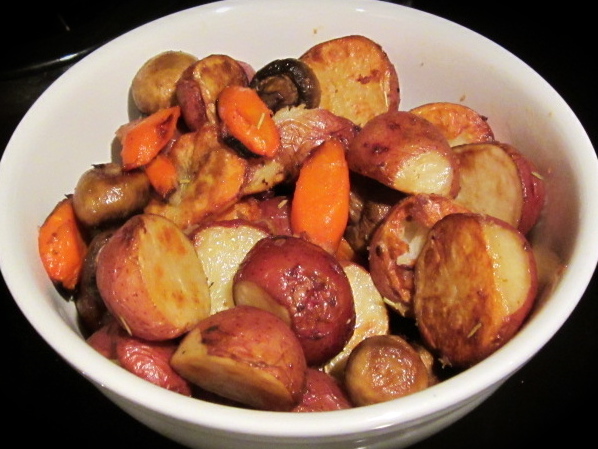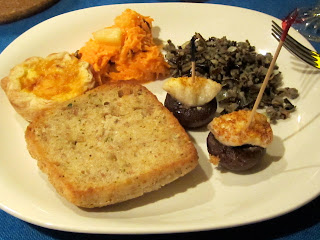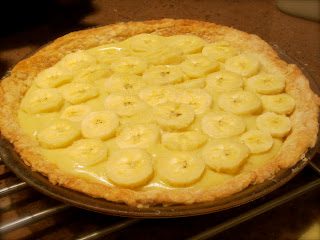 |
| Barbecue pulled pork and coleslaw on Panini bun |
Well, maybe it was just a bad day for the caterer or maybe
my Northern Canadian palate simply could not appreciate the legendary culinary
offerings of the South. Either way, all I can remember about that lunch was
trying to be polite as I ate the cold, greasy, fatty mess of pork plopped on my
plate next to the oddly warm puddle of coleslaw and the hard white roll. Not
good. Not good at all. In fact, it was enough to keep me far away from pulled
pork even as it rose to fame over the next ten years of the foodie explosion
and enjoyed increasing popularity with caterers in my part of the world.
Once in a while though, I follow my own advice and I
decided to give pulled pork a second chance. I remembered my daughter Keeley
telling me she’d made barbecue pulled pork in her slow cooker for a potluck and
that she’d been asked for an encore of the dish for the next potluck. I called
Keeley for her recipe. (I am so fortunate to have children who not only have
grown up to be smarter than me, but to be great cooks, too.) Keeley couldn’t give
me the exact recipe she used, because there wasn’t one, but she described her
basic technique. I’ve incorporated it here along with the ingredients I used. I found the rub recipe at Steven Raichlen's Barbecue! Bible (he's written 28 books about barbecue so he knows what he's talking about) and the rest of the recipe is gleaned from a combination of recipes from several sites. The result was very, very tasty. I am happy to report that pulled pork and I
are once again on the best of terms.
 |
| Every bite GONE! |
This barbecue pulled pork makes a terrific suppertime
sandwich served up on a pillow of a Panini bun with side of homemade coleslaw. As you can see in the photo above, I piled my coleslaw right on top of the pork and it was yummy. You can also serve it over rice or mashed potatoes. Any leftover
pulled pork will mix well with baked beans (and I’ll be posting a recipe for making delicious baked beans in a few days).
MA’s Slow Cooker Barbecue Pulled Pork
3 lb pork loin roast
For the Basic Barbecue Rub:
¼ cup coarse salt (kosher or sea salt)
¼ cup brown sugar
¼ cup paprika
3 tbsp freshly ground pepper
1 tbsp garlic powder
1 tbsp dried onion flakes
½ to 1 tsp cayenne pepper
½ tsp celery seeds
Mix together the ingredients for the Basic Barbecue Rub. Put it into a jar as you won’t need the full cup of Rub to make this recipe. Store away from heat and light. It will keep for several months.
For the Slow Cooker:
3 onions, sliced
1 cup barbecue sauce, homemade or purchased
1 cup cooking liquid, either pop or broth or water (I used ginger ale, but read root beer is good, too.)
 |
| Rubbed pork the next day |
Cover the roast with part of the Rub, massaging and patting it well into the meat.
Place the roast in a covered dish and put in refrigerator over night.
Place the roast in a covered dish and put in refrigerator over night.
 |
| Into the slow cooker |
The next day, place the onions in the bottom of the slow cooker.
Place the pork roast, fat side up, on top of the onions.
Add the barbecue sauce and cooking liquid.
Set slow cooker on low heat and cook for 6 hours.
Remove the pork from the slow cooker and put into a large
casserole. The meat may fall apart as you move it, so take care
when lifting it out. Pull the pork apart with two forks.
casserole. The meat may fall apart as you move it, so take care
when lifting it out. Pull the pork apart with two forks.
Return meat to slow cooker and cook on low heat for 1 to 1 ½
hours.
Serve in sandwiches, over rice or potatoes, or mixed into baked
beans.
Printable Recipe for MA's Slow Cooker Barbecue Pulled Pork
































